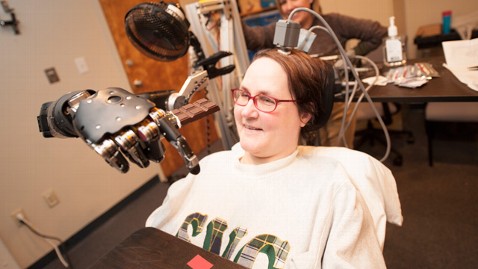Mind-controlled limbs and redefining the self

This week there were reports of the amazing advances being made in brain-computer interface (BCI) technology. Following just weeks of training, a 52-year old woman, paralysed from the neck down, was able to use her mind to control a robotic hand to pick up objects on a table, including cones, blocks and small balls, and put them down at another location. She was even able to use the hand to feed herself chocolate.
Having had two arrays of microelectrodes surgically implanted into her left motor cortex, Jan is wired up to a computer that has been programmed to interpret the signals her neurons emit. This computer then passes on the interpreted signals to the robotic arm, which moves in accordance with the signals in real time.
Aside from the awesomeness of the technology, the use of neuroprostheses such as this raises a whole host of interesting philosophical and ethical questions. Particularly as the technology gets more sophisticated and more integrated, the distinction between the machinery being used and the person using it will become increasingly blurred. In the video, Jan already describes how she went from having to ‘think’ the commands (‘clockwise, up, down, forward, back…’) to merely having to ‘look at the target’ to effect accurate movement of the arm. This phenomenon is sometimes labeled ‘transparency of use’, where a tool serves a person’s goals without itself being an object of effortful control.Read More »Mind-controlled limbs and redefining the self
